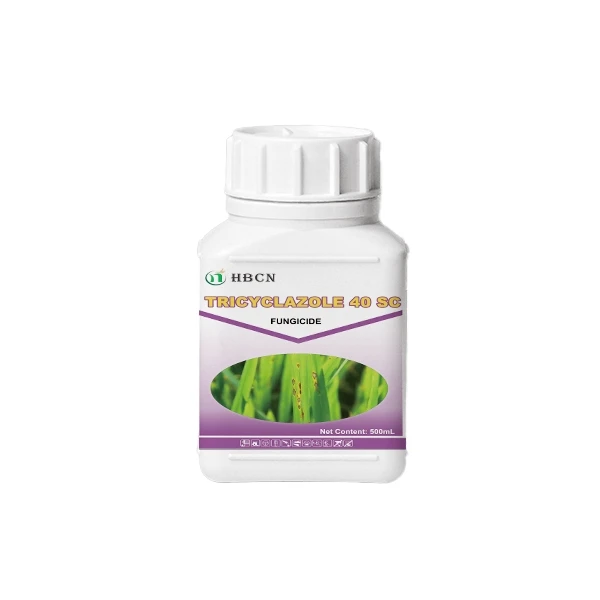
Hello, come to consult our products !
Feb . 18, 2025 11:36 Back to list
Top quality hi-yield Chlorantraniliprole16% SC 95% TC Indoxacarb4% 15% 30% SC 30% WDG Insecticide
Acetamiprid, a modern neonicotinoid insecticide, has gained prominence for its effectiveness in controlling pests like aphids and whiteflies while ensuring minimal harm to non-target species. For every handler or potential user, knowledge of its Material Safety Data Sheet (MSDS) is essential to harness its benefits safely and effectively. The MSDS is a crucial document that empowers users with in-depth safety information, ensuring the safe handling and application of this insecticide.
The firefighting and accidental release measures sections of the MSDS provide detailed protocols. In the event of a fire, typical firefighting measures like the use of water spray, foam, dry chemical, or carbon dioxide (CO2) are recommended. The MSDS advises isolating the area and ventilating after accidental spillage while employing absorbent materials and following stringent disposal guidelines to prevent contamination. Regarding storage and handling recommendations, acetamiprid should be kept in a cool, dry, and well-ventilated space out of direct sunlight to maintain its stability and efficacy over extended periods. The MSDS would typically advise users to strictly adhere to product labeling for specific storage instructions, which helps in maintaining product integrity and effectiveness. Another noteworthy aspect detailed in the MSDS is first aid measures. In cases of accidental ingestion, it advises administering water to the victim and seeking immediate medical attention. For skin contact, washing the affected area thoroughly with soap and water is recommended, while eye exposure requires immediate flushing with clean water. The MSDS also outlines the regulatory status of acetamiprid across various jurisdictions. This regulatory assurance ensures that when used according to guidelines, acetamiprid poses minimal risk to users and the environment, bolstering trust in its safety. In conclusion, the acetamiprid MSDS serves not only as a guide to safe handling but also as testament to commitment towards responsible pest management. By embracing such guides, users not only protect themselves and the environment but also align with a broader sustainable agricultural ethos. As agriculture and technology continue to evolve, the role of comprehensive documents like the MSDS remains integral in carving pathways to safer and more efficient pest control solutions.


The firefighting and accidental release measures sections of the MSDS provide detailed protocols. In the event of a fire, typical firefighting measures like the use of water spray, foam, dry chemical, or carbon dioxide (CO2) are recommended. The MSDS advises isolating the area and ventilating after accidental spillage while employing absorbent materials and following stringent disposal guidelines to prevent contamination. Regarding storage and handling recommendations, acetamiprid should be kept in a cool, dry, and well-ventilated space out of direct sunlight to maintain its stability and efficacy over extended periods. The MSDS would typically advise users to strictly adhere to product labeling for specific storage instructions, which helps in maintaining product integrity and effectiveness. Another noteworthy aspect detailed in the MSDS is first aid measures. In cases of accidental ingestion, it advises administering water to the victim and seeking immediate medical attention. For skin contact, washing the affected area thoroughly with soap and water is recommended, while eye exposure requires immediate flushing with clean water. The MSDS also outlines the regulatory status of acetamiprid across various jurisdictions. This regulatory assurance ensures that when used according to guidelines, acetamiprid poses minimal risk to users and the environment, bolstering trust in its safety. In conclusion, the acetamiprid MSDS serves not only as a guide to safe handling but also as testament to commitment towards responsible pest management. By embracing such guides, users not only protect themselves and the environment but also align with a broader sustainable agricultural ethos. As agriculture and technology continue to evolve, the role of comprehensive documents like the MSDS remains integral in carving pathways to safer and more efficient pest control solutions.
Latest news
-
Emamectin Benzoate: AI-Optimized Pest Control Solution
NewsAug.01,2025
-
Best Abamectin 95% | Top Pesticide for Crop Protection
NewsJul.31,2025
-
Insecticide Spirotetramat 11% + Thiacloprid 11% SC at Good Price
NewsJul.30,2025
-
Best Abamectin SDS - Premium Quality & Reliable Safety Data
NewsJul.29,2025
-
Agrochemicals Pesticides Solutions for Sustainable Farming
NewsJul.29,2025
-
High-Quality Tebuconazole Fungicide for Crop Protection at Best Price
NewsJul.29,2025
